Onitama – 2 player strategic fun
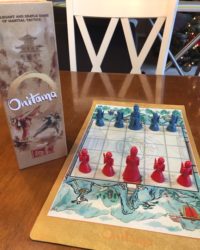
One of the first family board games we reviewed many years ago was Ninja Versus Ninja – in which 2 players face off on a grid trying to get their ninjas far into the opposing dojo for points or to knock out all the opposing ninjas.
While there’s a bit of strategy in Ninja Versus Ninja on when to move which ninjas and to where, the options were always based on the lucky (or unlucky) roll of the dice. It’s a fun and quick game, but a lot comes down to luck.
Well, if you’re looking for a fun and quick 2-player game with a dojo type theme that doesn’t revolve around luck, we got a great game for you – Onitama!
In Onitama, players try to either take out their opponent’s Master piece or move their own Master onto their opponent’s Temple Arch.
It’s a simple and straightforward game that’s filled with strategic choices throughout.
But it’s the unique way players maneuver their pieces that really makes this game shine!
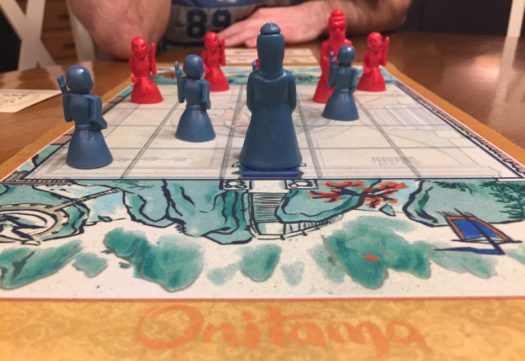
How to play Onitama
Set up:
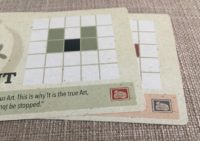
To begin, players set their Master pawn on their colored Temple Arch and place their 4 Student pawns along their baseline.
They shuffle the 16 Movement cards and each draw 2 cards which are placed face up in front of them.
Then one more Movement card is drawn. The color of the icon in the bottom right of the card determines which player begins (red or blue). This card is then placed face up to the right side of the play mat respective to the starting player.
The rest of the Movement cards won’t be used in the game and be placed back in the box.
Thus every game is only played with 5 of the 16 possible movement cards.
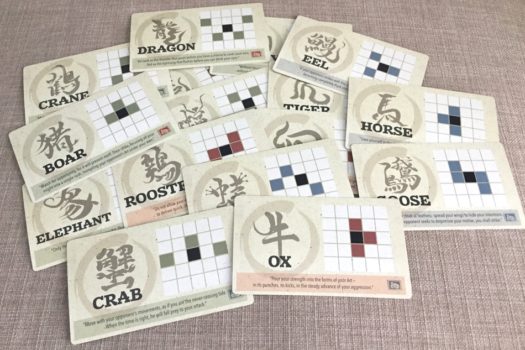
Player turns:
The flow of play in Onitama is super simple.
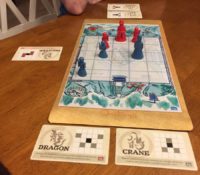
On a player’s turn, they move one of their pawns.
The options for moving a pawn are shown on the two cards in front of them.
The black space in the center of the card represents the pawn they choose to move. The colored spaces dictate where that pawn can move to.
So the player must choose one of the cards in front of them to use for moving a pawn.
Pawns can not move off the board and pawns can not share a space. As such, a player may not move a pawn to a space occupied by their own pawn. However, a player may move a pawn into a space occupied by and opponent to eliminate it from the game.
Once a player has moved a pawn, they place the movement card used to the left side of the play mat. They then take the movement card to the right of the play mat and place it next to the card they didn’t use. Thus, once again they have 2 movement cards in front of them.
Then play passes to the other player.
Play continues this way until one player has won the game – by either eliminating their opponent’s Master or getting their own Master onto their opponent’s Temple Arch.
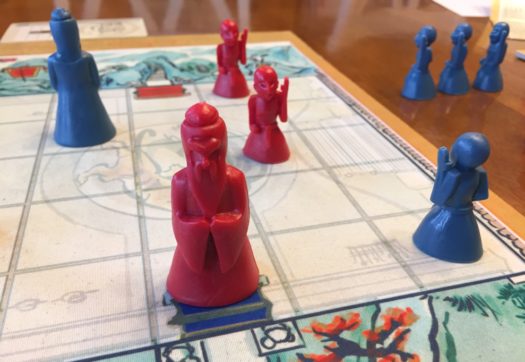
Can the whole family enjoy Onitama?
Onitama is a fantastic board game the entire family can enjoy!
The game play is super simple, yet requires strategic thinking.
It has chess-like elements and feel, but the play time is short.
It doesn’t require any reading, yet demands spacial understanding.
The options for movement each game are limited, but the variability is huge.
And the game can be quite addicting.
All of those things combined make Onitama a great game for families to enjoy.
While young kids may not understand all the strategic elements of the game, they can still enjoy moving their pawns around to match the cards in front of them. And along the way, they’ll start to develop such skills.
If you’d like your kids to develop their strategic thinking, Onitama is a wonderful way to do it.
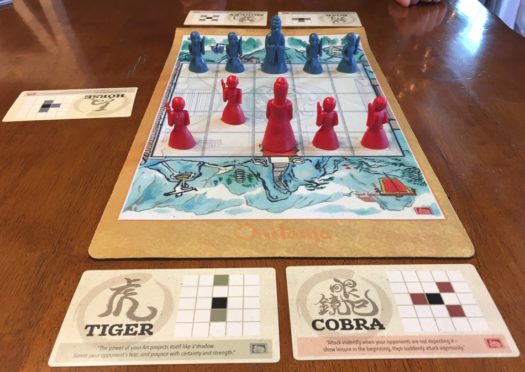
Strategic thinking required
Like with most 2-player strategy games, the most engaging game experiences are between players of equal aptitude.
That doesn’t mean the game isn’t fun for a parent to play with a child. In fact, doing so will help your child develop great mental skills.
Similar to chess, Onitama is a battle of minds where players maneuver into enemy territory to corner a King.
However, unlike chess the movement options aren’t tied to specific playing pieces. Instead, the movement options in Onitama are limited to which cards are in front of a player on their turn. But those keep changing from turn to turn.
And that requires a new level of thinking – as well as planning.
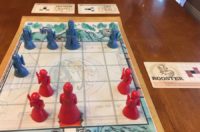
Not only do players need to pay attention to what movement options they have to work with, but they should also keep an eye on what options their opponents have to choose from to counter.
By looking at the cards in front of their opponent, they can anticipate potential moves their opponent may make.
Players can also look ahead to the card they’ll get as a movement option in their next turn by paying attention to the card to the right of the play mat.
On the flip side of that, players will also be passing off their used card to their opponent – giving yet another thing to think about when choosing which card to use for movement on a turn.
It’s all a great back-and-forth battle of minds that we really enjoy.
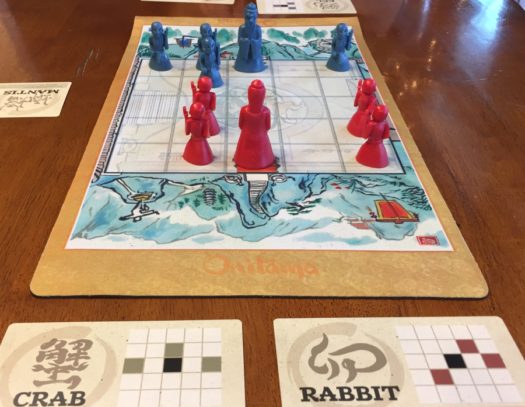
Very well produced
Not only is Onitama very fun to play, but it’s also very well produced.
Arcane Wonders did a fantastic job with all the components in the game!
Just looking at the game box you can tell the game is unique. It stands tall and uses a magnetic closure.
Upon flipping open the box you’ll see that everything has its place.
The pawns each have their own slot as do the movement cards. And the play mat is rolled up neatly.
Speaking of which, the play mat is terrific.
It’s made of the same rubber composite as typical mouse pads and the art on it delivers a nice oriental theme. The play mat also makes the game easy to play almost anywhere as the pawns won’t slide around.
The movement cards are also well done.
The movement diagrams on the cards make it easy to know your options as well as clearly see your opponent’s on the other side of the play mat. In addition, each card has a cool design in calligraphy style that matches the name of the movement card.
Well done Arcane Wonders!
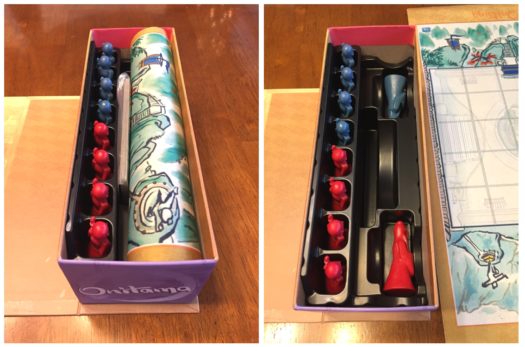
How does Onitama score on our “Let’s Play Again” game meter?
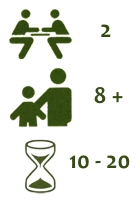 As if our “quite addicting” comment above doesn’t say it all, Onitama scores very high on our “let’s play again” game meter.
As if our “quite addicting” comment above doesn’t say it all, Onitama scores very high on our “let’s play again” game meter.
I’m a big fan of 2-player strategy games and love the way they get me to exercise my mind. However, some of these type of games can last a long time.
Not so with Onitama.
Onitama gives you a great mental exercise and fun experience in short shots. That’s also why it’s so easy to play game after game.
Add to that the fact that there are 16 movement cards and you only play with 5 each game means that there’s an endless variability in how each game will play out.
We’ve played both ways – random card selection vs. using specific cards at the start of the game – and have enjoyed the game every time.
Onitama has earned a prominent spot in our game closet and we highly recommend it for everyone!
We’d like to thank Arcane Wonders for providing a review copy of Onitama.

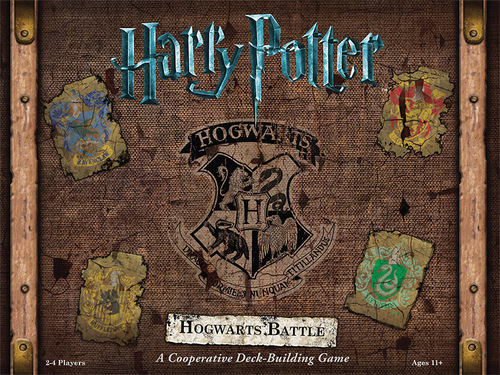
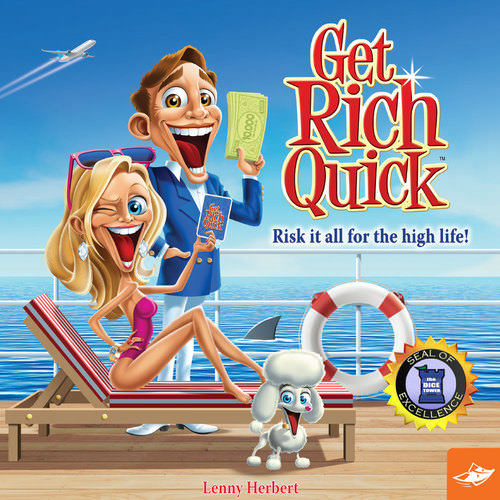
Would you suggest this or hive pocket for play with a 7 year old who likes chess?
Doug – There’s no doubt we love Hive as well. I’d suggest going with Onitama first.
Thanks, Trent. Really enjoy the site and reviews. Keep up the good work.